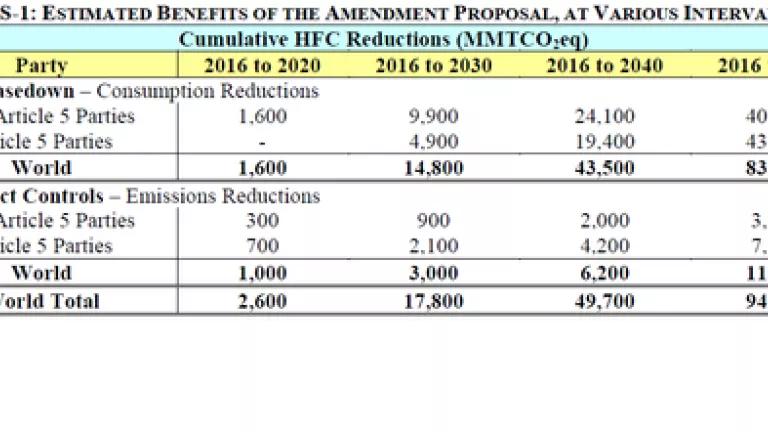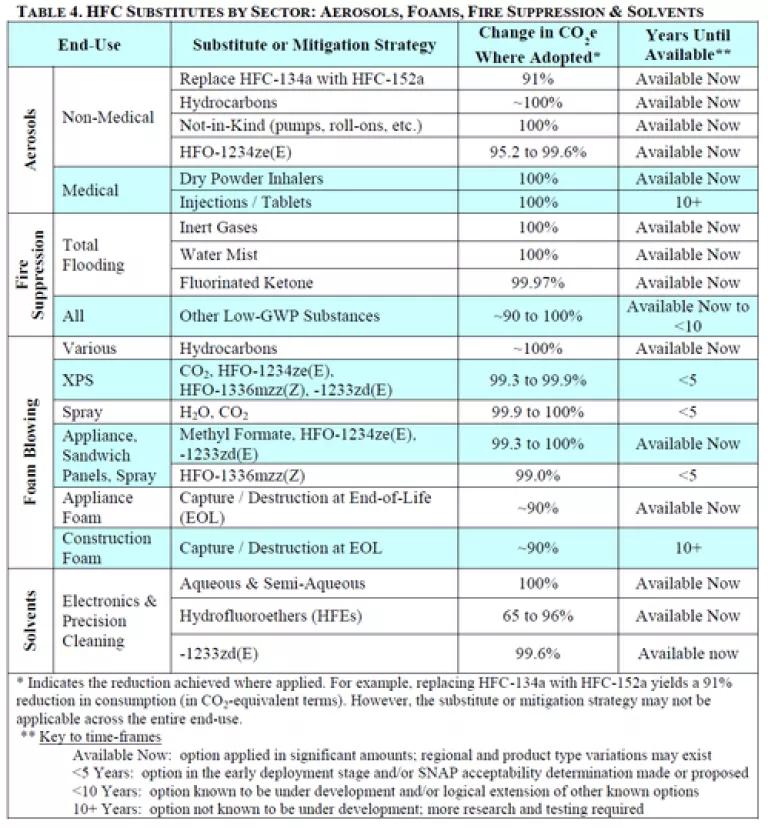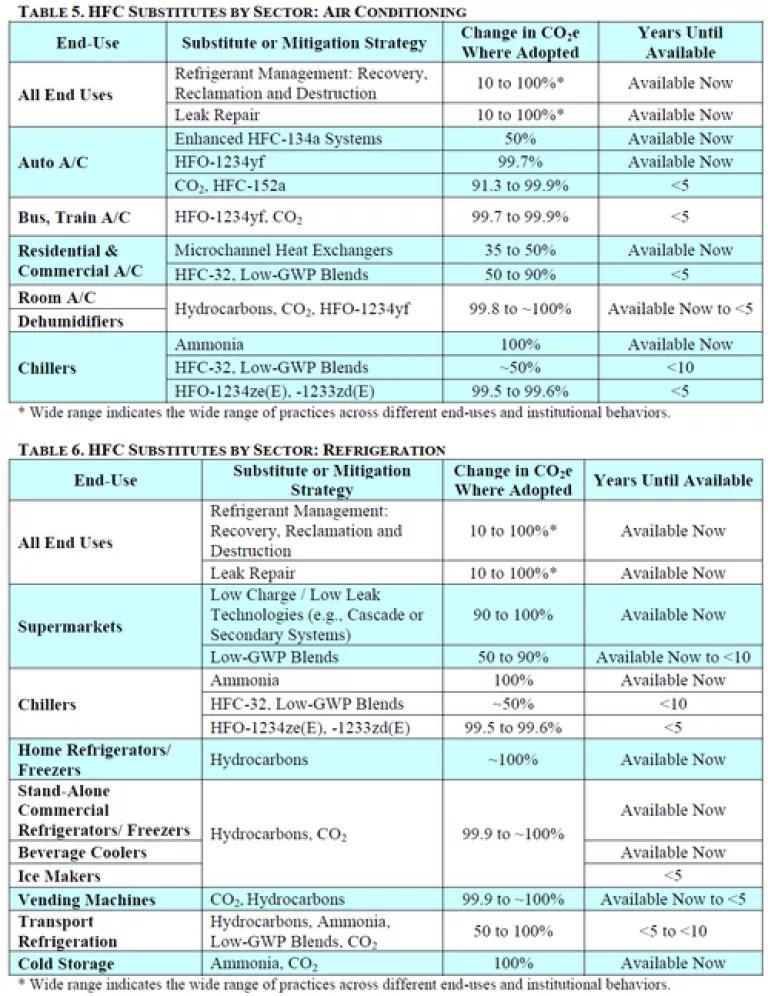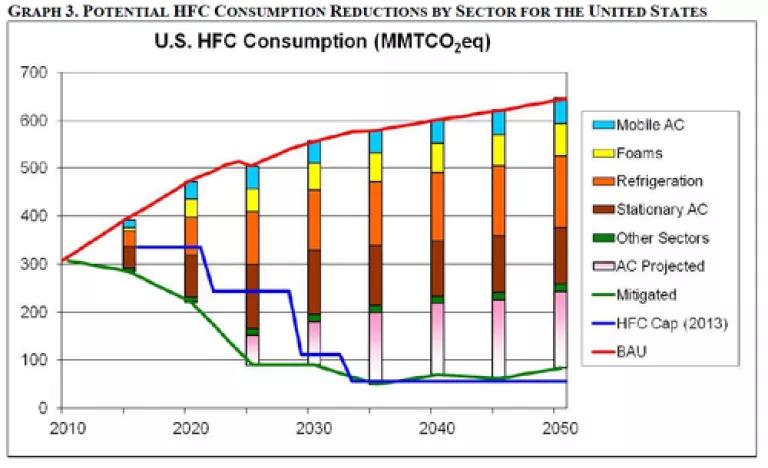
Last Tuesday, President Obama announced a far-reaching Climate Action Plan to cut U.S. carbon pollution, protect vulnerable communities from climate impacts, and reinvigorate international climate cooperation. The centerpiece of the plan a set of actions under existing federal laws by the Environmental Protection Agency, the Energy Department, and other agencies to curb carbon pollution and cut energy waste, in order to cut total U.S. carbon pollution 17 percent from 2005 levels by 2020.
One key initiative is phasing down the super pollutants known as hydrofluorocarbons (HFCs), which carry a heat-trapping punch thousands of time that of CO2. The U.S. has already joined with Mexico and Canada to propose a global HFC phase-down under the Montreal Protocol, and the HFC phase-down proposals got a boost in Bangkok in last week’s treaty talks.
The president’s plan directs EPA to do more to cut HFCs at home. Under the administration’s landmark clean car and fuel economy standards, automakers are already replacing HFCs in car air conditioners. The Climate Action Plan says EPA will use the Clean Air Act’s “significant new alternatives program” (SNAP) to cut HFCs further by “identifying and approving climate-friendly chemicals while prohibiting certain uses of the most harmful chemical alternatives.”
In other words, “in with the new and out with old.” That’s exactly what NRDC asked EPA to do last year, in a petition filed jointly with the Institute for Governance & Sustainable Development (IGSD).
EPA just released a new analysis examining the global benefits of phasing down HFCs worldwide, the availability of alternatives, and pathways for phasing down HFCs domestically. The analysis contains some very illuminating tables and graphs, which I’ll excerpt below.
Global benefits
EPA’s analysis shows that phasing down HFCs worldwide on the schedules proposed in the North American proposal would produce huge global warming reduction benefits. EPA estimated the reductions decade by decade, compared to expected trends in HFC growth, in both developed and developing countries. (You can click on the tables to enlarge them.)
The global warming reduction benefit numbers start large and get larger – from more than a billion tons of reductions (measured in tons of carbon dioxide equivalent) achievable in this decade, to more than 80 billion tons of reductions by 2050. (Another billion tons, growing to 11 billion tons, could be avoided by curbing emissions of the extremely potent heat-trapping gas known as HFC-23 which is an unwanted by-product of making HCFC-22.) The avoidable total, more than 90 billion tons, equals more than two year’s current worldwide emissions of all forms of carbon pollution.
Available alternatives
The EPA analysis assesses the availability of HFC alternatives in dozens of applications. It finds that (1) alternatives are “available now” for many applications, and (2) alternatives are expected in “less than 5 years“ or “less than 10 years” for nearly all other uses. Alternatives development is expected to require “10+ years” in only two relatively small subsectors. The following three charts cover the range of HFC uses. (Click to expand.)


The EPA paper presents specific case studies of national and corporate initiatives for replacing HFCs in important applications in different parts of the world.
Phase-Down Pathways in the U.S.
The EPA report also assesses pathways for meeting or beating the North American proposal’s phase-down schedule for the U.S. and other developed countries. The proposal covers each country’s overall production and consumption of HFCs, weighted on the basis of their heat-trapping punch (CO2-e), and within that national budget, different sectors can transition at different times.
On that basis, EPA presents one combination of measures that would comply with the North American proposal’s schedule in the U.S. In fact, the pathway presented would more than comply. (Compare the green line to the blue step-down schedule.)

At the Bangkok HFC negotiations last week, many countries understandably asked for information and assurances that the technological alternatives will be available in time to meet the proposed HFC phase-down schedules. The EPA analysis shows that many alternatives are already available, and that many more are coming soon, in plenty of time for countries to meet the commitments they are being asked to take on.

